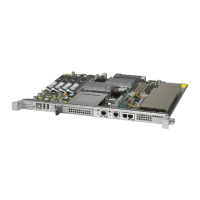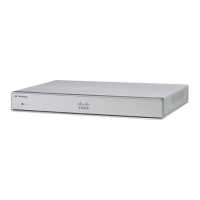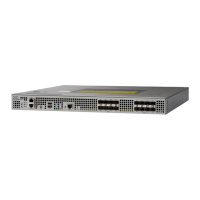A-4
Cisco 10000 Series Router Quality of Service Configuration Guide
OL-7433-09
Appendix A Configuring Frame Relay QoS Using Frame Relay Legacy Commands
Configuring Frame Relay IP RTP Priority
Example A-5 sets the exponential weight constant to 16.
Example A-5 Setting the Exponential Weight Constant
Router(config-map-class)# frame-relay interface-queue fair random-detect
Router(config-map-class)# frame-relay interface-queue fair random-detect
exponential-weight-constant 16
Example A-6 sets the precedence parameters.
Example A-6 Setting the Precedence Parameters
Router(config-map-class)# frame-relay interface-queue fair random-detect precedence 2
32000 32000 65000
Router(config-map-cl)#
Configuring Frame Relay IP RTP Priority
The Frame Relay IP RTP Priority feature allows Voice over Internet Protocol (VoIP) packet classification
at the DLCI level. This classification is based on whether or not the packet IP Real-Time Protocol (RTP)
has an even-numbered UDP port within (or outside of) the specified range. Only even ports are matched
because they carry the real-time data streams. Odd ports are not matched because they only carry control
information. If the IP
RTP even-numbered port is within the configured range, the packet is identified as
a real-time packet. Real-time packets are given higher priority than regular data packets and are queued
to a priority output queue.
Note You must configure the Frame Relay weighted fair queue interface to use this feature (see “Specifying
a DLCI Queue Weight” section on page A-2). A priority queue is created for each DLCI that has
frame-relay ip rtp priority configured.
Parameters for Frame Relay IP RTP priority are configured using the map-class frame-relay command
(see the
“Creating a Map Class” section on page A-1). When a map class with IP RTP defined is
associated with a Frame Relay interface, all DLCIs created for that interface are assigned a priority
queue for the RTP packets. A different map class can be associated with a different DLCI, which means
each DLCI is assigned a different RTP port range.
The following are examples of priority queues:
• DLCI 2 RTP queue
• DLCI 1 RTP queue
The following are examples of non-priority queues:
• NCQ
• DLCI 3 data queue
• DLCI 2 data queue

